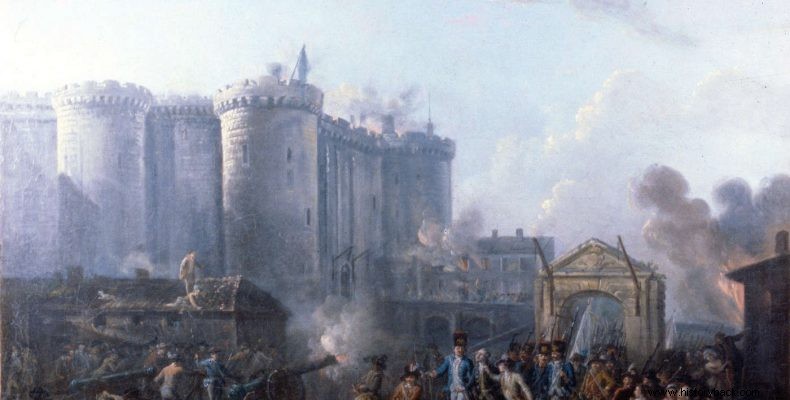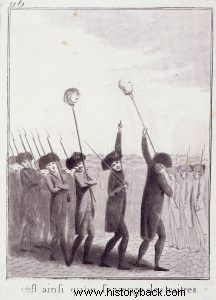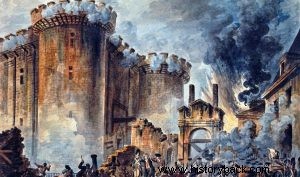
The Bastille was a powerful fortress with eight towers built in the 14 th century to protect Paris from English attacks during the Hundred Years War. It gradually turned into a prison where the infamous Marquis de Sade was also held.
On July 14, 1789, the citizens of Paris rose up and occupied the palace of the garrison, taking about 30,000 muskets, but not gunpowder which had been stored in the Bastille. In the Bastille, at that time, only three prisoners were kept, one insane, one who had attempted to assassinate Louis IE 30 years before and one noble, on the orders of his father.
The garrison of the Bastille consisted of only 82 retired soldiers of old age and 32 Swiss mercenary grenadiers. There were 40 cannons in the fort, but the garrison was not sufficient to use them. The guard was Bernard René de Launay.
The armed crowd of insurgents gathered outside the Bastille at noon on the 14th July demanding the delivery of gunpowder and cannons. The guard began negotiations with representatives of the rebels.
At around 1:30 p.m., some of the crowd climbed into an adjacent house and made their way to the unguarded outer enclosure of the fort. They then broke the chain holding the fort's drawbridge in place, causing one of the crowd to be crushed by the bridge.
Soldiers inside shouted at the crowd to move away and then opened fire as the insurgents charged towards the fort reinforced by units of the French Guard and two cannons. Military units that were nearby did not intervene in favor of the besieged.
At 17.00 the guard ordered a cease-fire and in a letter set his conditions in order to surrender the fortress. The terms were not accepted but nevertheless the garrison decided to surrender although the attackers had not achieved the slightest thing, up to that moment.
At 17.30 he opened the inner gate and the crowd poured in. By then 98 attackers and one of the defenders had been killed. The guard was arrested and taken to an adjacent house by force. There he was tortured so fiercely that he cried out:"Enough, let me die." Then he received continuous stabbings and died slaughtered.
Then they cut off his head and carried it around on a spear. Three other officers of the guard were brutally massacred. Two deserter soldiers were also lynched. Two Swiss grenadiers were also killed. The mayor was also murdered.
King Louis XVI was informed of the fall of the Bastille the next day and immediately asked a noble? "Is this a rebellion?" "No, Your Majesty," he replied. "It's not a rebellion, it's a revolution"...
Soon the news of the storming of the Bastille spread throughout France and with it the revolution. In reality the Bastille could stand much longer. It was more the mild character of her garrison that decided the result than the impetuosity of the revolted people. The fall of the fortress, however, created the legend of its occupation. But the Bastille was not captured, it was simply surrendered.

Rebels with the heads of the guard and the mayor impaled on spears.

